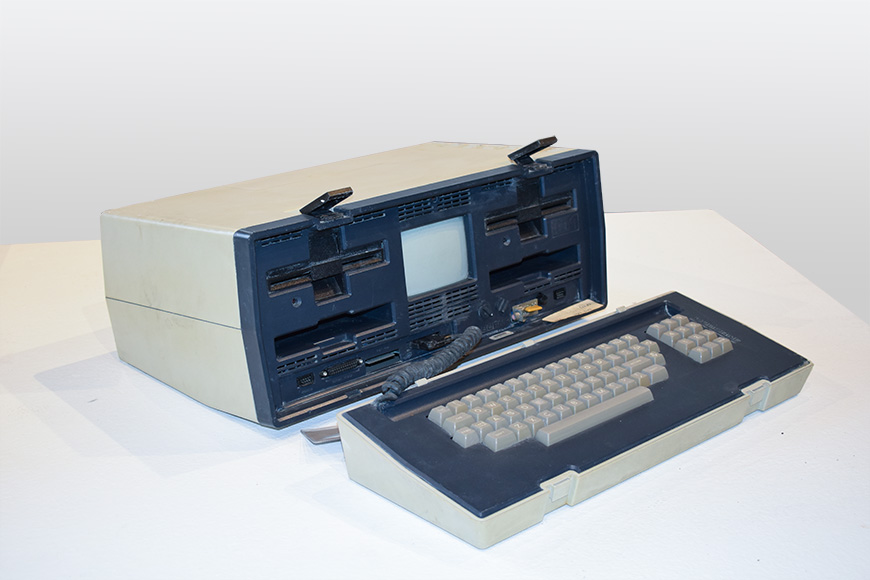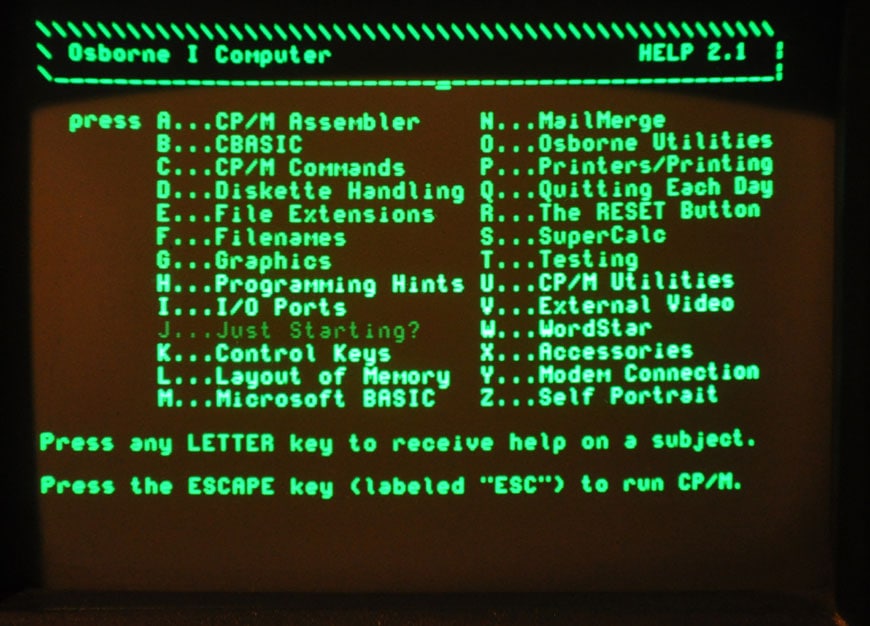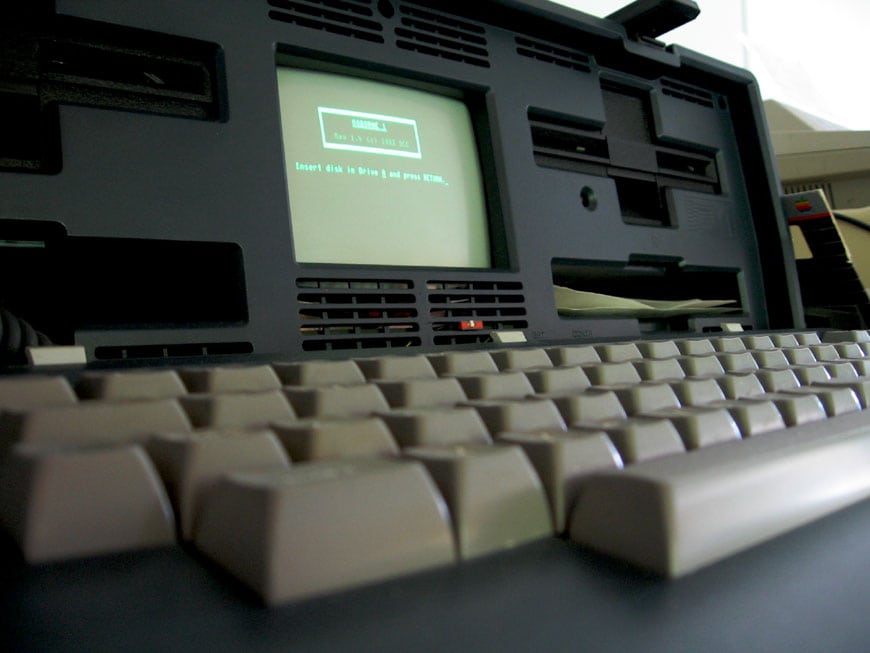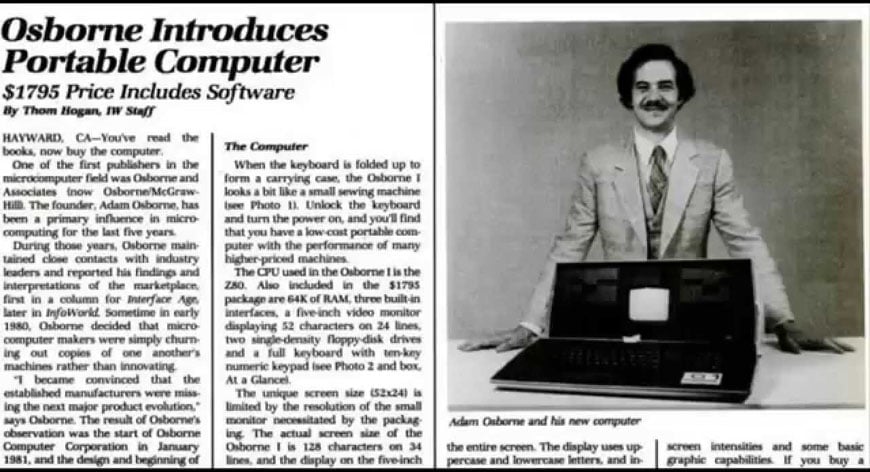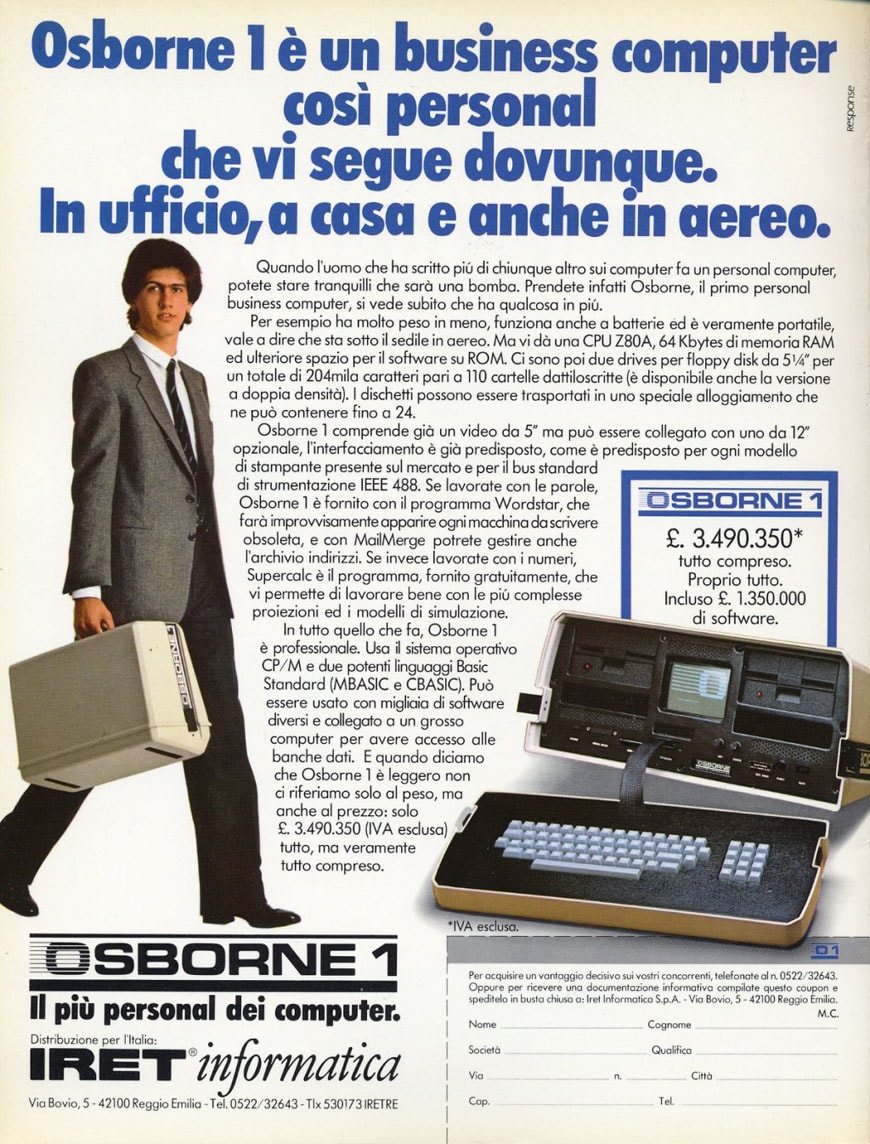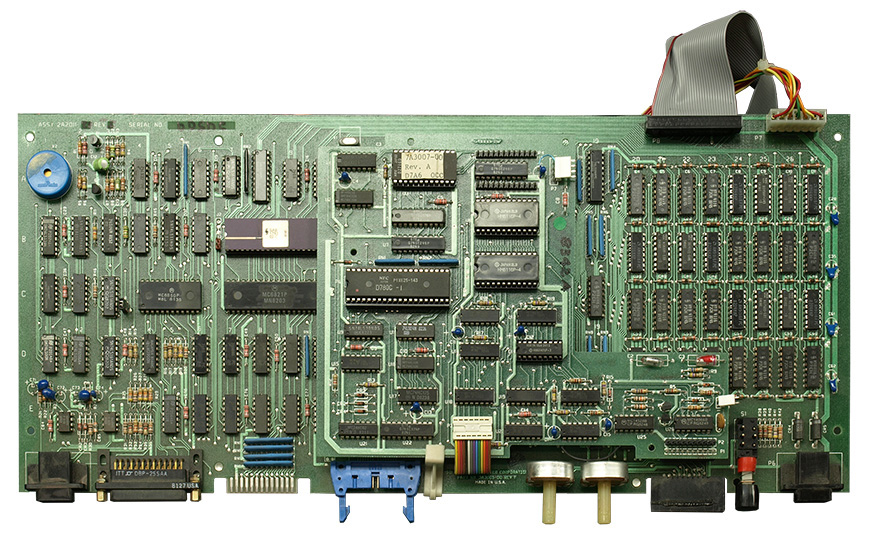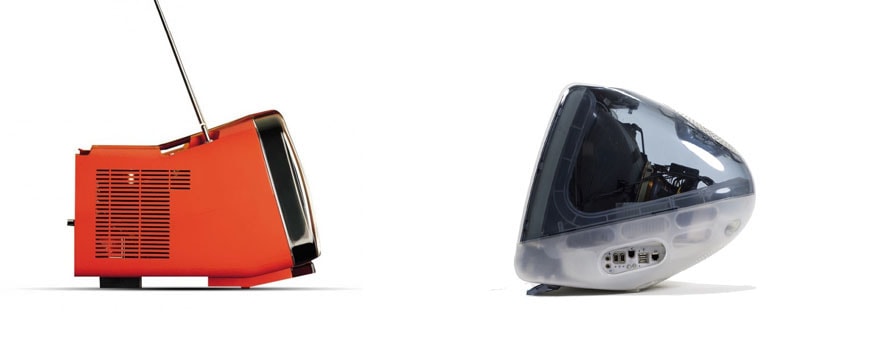Osborne 1 (1981) – when the personal computer became portable
Photo credits: see bylines
The Osborne 1; photo Piergiovanna Grossi (CC BY-SA 4.0).
Osborne 1 (1981) – when the personal computer became portable
The Eighties are also remembered for the obsession many had with fitness and bodybuilding, at those times; and indeed the guy carrying his Osborne 1 “portable” microcomputer in this advertisement must have had a very trained arm to swing the over 24 pounds of plastic, metal, and silicon of the Osborne with a smile.
Designed by American engineer Lee Felsenstein, the Osborne 1 is widely considered the first portable personal computer ever (the IBM 5100 anticipated it by six years but was so outrageously expensive that it’s hard to call it really “personal”*). It had been also the only one produced in high volumes by San Francisco-based Osborne Computer Corporation during its brief life, from 1980 to 1985.
Presented in 1981, the Osborne 1 – which was clearly inspired by one of the many seminal projects developed at the Xerox PARC in Palo Alto, namely the Xerox NoteTaker – was not a laptop (it didn’t have an internal battery) but a computer which could be rather easily moved from one place to another; say, from a businessman’s office to his weekend home.
The machine was based on classic Z80-CP/M architecture, with a 4MHz Zilog Z80 processor and 64KB of RAM; it was bundled with a comprehensive software package that included a word processor, a database, and a spreadsheet. The software bundle was stored on single-side floppy disks, since the machine, like most computers of the time, didn’t include a hard disk drive.
The interior of an Osborne 1 with some technical components identified; image Wolfgang Stief (CC0 1.0) with annotation by Riccardo Bianchini / Inexhibit.
The biggest problem with the Osborne 1 (besides the weight) was its tiny 5-inch CRT monitor; it was theoretically possible to connect the PC to a larger external monitor, but this would have nullified de facto its portability.
Another problem was that the computer was a bit prone to overheating; indeed, the Osborne 1 was fanless, therefore the machine was cooled only by convective heat transfer through a vent cut in the case.
Photo Wolfgang Stief (CC0 1.0).
A screenshot of the CM/M interface and a close-up view of an OC1; photos by wlef70 (CC BY-NC-SA 2.0) and Marcin Wichary (CC BY 2.0).
Despite such drawbacks, the Osborne 1 encountered good commercial success in its first year; its innovative concept, robust design, and very reasonable price ($1,795 in 1981, corresponding to about $4,800 in 2017 dollars) were highly appreciated by businessmen, small and medium enterprises, and schools. **
Unfortunately for Osborne, the advent of the IBM PC, other portable computers with better performance such as the KayPro II, and the first true laptops, such as the GRID Compass, rapidly undermined the Osborne 1 success.
But the worst move was made by Osborne itself which, in 1982, prematurely announced the release of two OC1 successors, the Executive and the Vixen, thus implicitly inviting people to stop buying the “outdated” model and quickly leading the company to bankruptcy three years later.
The OC1 was featured in a 1981 article by Thom Hogan from the magazine InfoWorld; in the picture: Osborne Computer Corporation’s founder Adam Osborne
In an Italian advertisement for the OC1, the message says: “Osborne 1 is a business computer so personal that it follows you everywhere. At work, at home and even in an airplane” (the computer was indeed designed to fit in a plane overhead bin)
If, as said, the Osborne 1 was neither the first portable computer nor the first laptop, why it is still considered a milestone in computer design?
The reason is that all the “portable” PCs manufactured before were not really…portable; indeed, that definition was often used to differentiate home computers from mainframes; even the 1965 Olivetti Programma 101, possibly the first PC ever, can be considered a “portable” computer in those terms (and its advertisements somewhat depicted it as such).
The Osborne 1 was instead the first computer truly designed with portability in mind. This is evident, for example, from its all-in-one concept, the briefcase-style body, as well as from the use of ABS plastic to reduce the computer weight as much as possible and to provide some level of shock-resistance to it (the company also tested a metal case, but found it too expensive).
To make fun of Osborne’s size and weight (as I did at the beginning of this article, admittedly) is certainly amusing, today. Nevertheless, we should realize that, in 1981, creating a truly portable computer was a visionary idea and a quite technically demanding effort.
For example, look at how much room only 64KB of RAM took up in those days.
Up: the logic board of the Osborne 1, note the 32 chips of RAM on the right; middle: close-up view of the memory bank; photos: David Jones (CC0 1.0) / Inexhibit.
Therefore, considering that “portable” computers such as the IBM 5100 weighed 52 lbs / 24 kg or even more, the 24 lbs / 11 kg of the Osborne – so laughable today – seemed to many almost a miracle in 1981.
Despite its short life, the Osborne 1 indubitably marked a fundamental step in computer design, demonstrating that portable PCs were technically feasible and commercially attractive, thus somewhat anticipating the advent of laptops and tablets.
Notes:
* The street price of the 64KB version of the IBM 5100 was $19,975 in 1975, some $90,000 in today’s dollars
** As an example of how the computers made by Osborne had a brief period of mainstream appeal in the early 1980s, you can see an Osborne Executive (the successor of the OC1) aboard the aircraft carrier USS Nimitz led by Kirk Douglas in the science fiction movie The Final Countdown (1980).
References:
A complete technical analysis of the Osborne 1 by Rik Myslewski is available at:
http://www.theregister.co.uk/2011/04/08/osborne_1_teardown/
Two other interesting articles with images can be found at:
http://oldcomputers.net/osborne-.html
and
http://www.mrmartinweb.com/computer.html#osborne
OC1 pictures and info can be found on the Computer History Museum website at:
https://www.computerhistory.org/
copyright Inexhibit 2024 - ISSN: 2283-5474

